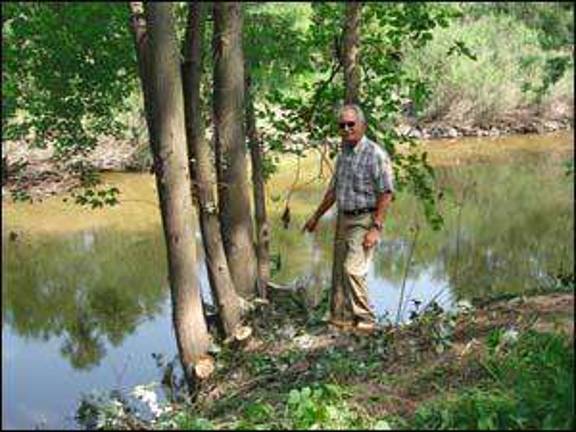Wallkill River clearing may have eased floods, officials say

Do the math: 26 more miles of river's edge left to clear, at $42,000 per mile Goshen The snagging and clearing work done in the Wallkill River this past July apparently helped when the storms of late summer hit the area. "The water flowed magnificently,” said Orange County Legislator Tom Pahucki, who championed the project. Pahucki chairs the county's Soil and Water Commission. The project’s purpose was to “snag” meaning to remove dead and down trees from the river’s lower bank and bench area and “clear” meaning to remove leaning and live trees obstructing the river’s flow. “I learned from multiple growers that the project helped,” said Kevin Sumner, Orange County Soil and Water Conservation District Manager. “The people who live there are in touch and qualified to say if the project had benefit.” However, he said, the extreme nature of the storms makes it hard to assess the project's full benefit. “No matter what we did to clear even clear cut there would still be devastation," said Sumner. The New York State Department of Environmental Conservation authorized the cutting of up to 40 percent of the trees along the river's edge, allowing for a canopy of overhead limbs and leaves as a foraging area for the endangered Indiana bat. The clearing ranged from below Pellet’s Island bridge to the Route 17M bridge. The Soil and Water Conservation Commission wants to take a more comprehensive approach to clearing and snagging, instead of doing the job piecemeal, said Sumner. Two major tributaries to the Wallkill, Quaker Creek and Rutgers Creek, have restrictions that contribute to flooding. These channels, along with the Wallkill, need more work. About 26 miles more still need to be cleaned out. How quickly work gets done depends on funding, said Sumner. It cost $42,000 to clean the Pellet’s Island channel, which totals about one mile. “You do the math," he said. Gov. Andrew Cuomo has allocated $5 million for damage repair from flooding that’s all routed through the Soil and Water Commission offices. Twenty counties are eligible for funding. The Soil and Water Commission has been diligent in leading applicants through the process to apply for funds. In round one, six of 15 applications submitted have so far been approved to address road repair, culvert failure, and dyke repairs but none yet for snagging and clearing. “The New York State Soil and Water Committee prioritizes the applications and only the more serious projects will be funded,” Sumner explained. In round two, Orange County farmers have submitted 52 applications totaling $800,000 in funding. After prioritization, the governor’s office makes the final decisions. “The clock is ticking,” said Sumner. He said the money has to be obtained there’s no budget to lay out money and then wait for reimbursement from the state and the work done by the end of December. “The Soil and Water Commission is trying to do some good," he said. "This money was dropped in our laps, and we had to respond to it. We’re putting in some long days." I learned from multiple growers that the project helped.” Kevin Sumner, Orange County Soil and Water Conservation District Manager Why floods occur here Although there are many reasons why flooding occurs, county Legislator Tom Pahucki said that, for this area, several are prominent: an increase in precipitation, a build-up of silt in the Wallkill River and tributaries, and growing vegetation and trees that restrict the river’s flow. The last time serious work was done on the river was in the 1940s, when the river was cleared, drained and dredged, he said. “The Army Corps of Engineers acknowledged at that time that this was a 50-year project, not a lifetime project," he said. In addition, large-scale development projects, like the Galleria Mall and the brand-new Orange Regional Medical Center in Wallkill 20 acres that was once gravel, pasture, and woods are now all black top and roofs, which causes major run-off. Finally, there's the push and pull among organizations concerned with the river and other environmental issues. “Let’s put a priority of people over bats and turtles, and try to peacefully co-exist,” said Pahucki. “I know if we didn’t do this project, it would have been far worse," he said. "There was no hold-up, no trash held up by trees. The water went right through."